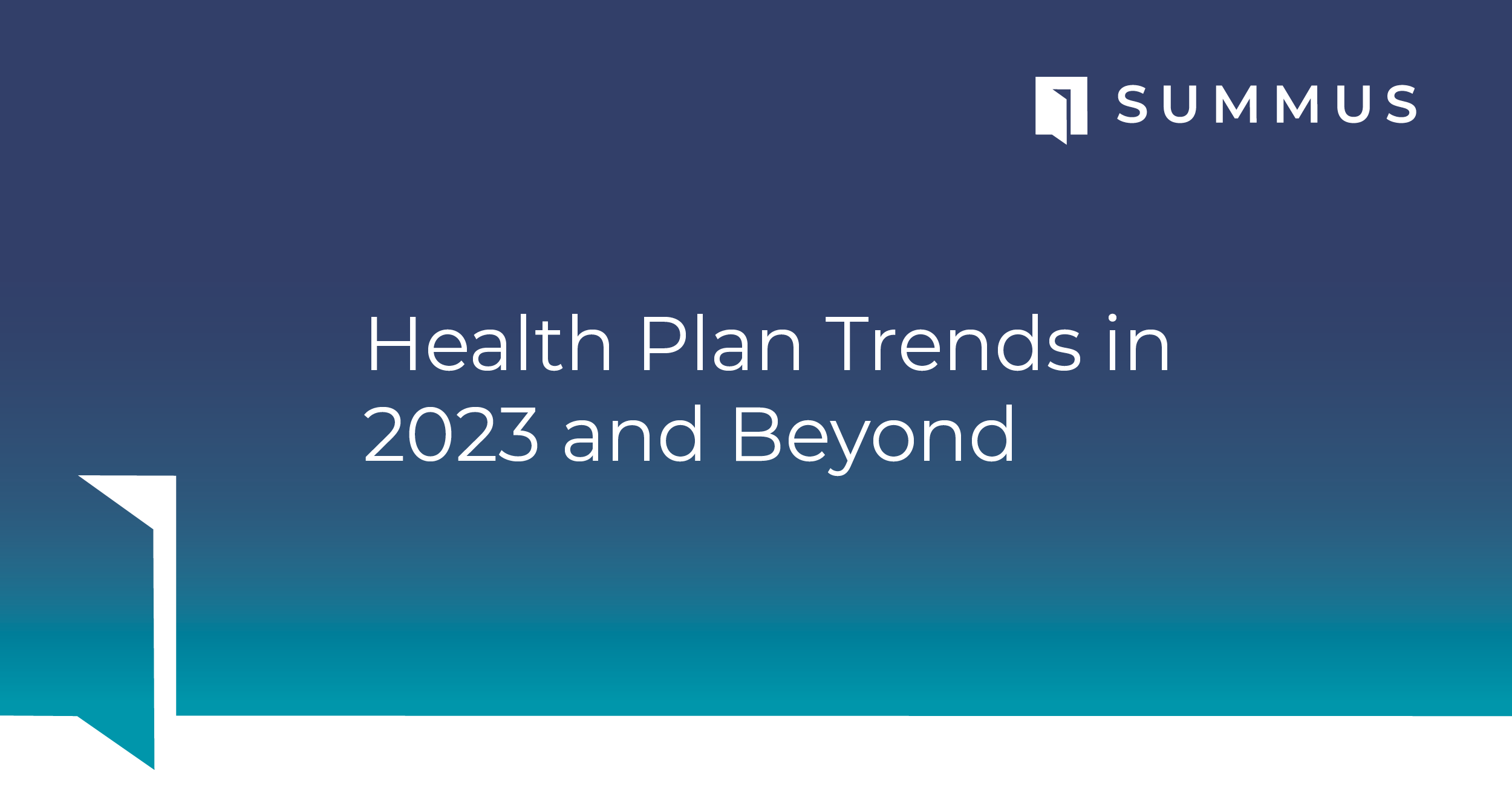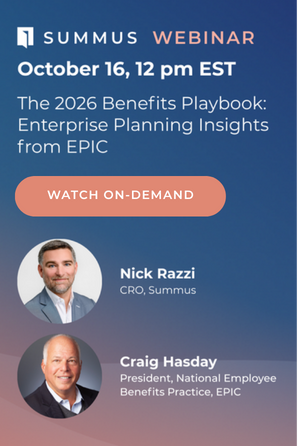By Sarah Baker, MPH, Summus Senior Director, Product Marketing
Major national health plan earnings are available for the second quarter. After listening to insights from plan leadership, we’ve noted some common themes and industry-wide trends. These trends will shape the second half of 2023 and continue into 2024. This will impact everything from premiums to healthcare reimbursement and condition management strategy.
Steady success with value-based care models
The first health plan trend mentioned in health plan earnings calls was the continued evolution of value-based care models. The move towards value-based care is progressing on multiple fronts. Primary care providers and clinics, pharmacy pricing and home health care are among the areas where plans are working to create new payment models that reward outcomes.
They are finding success in a number of areas, seeing results such as improvement in clinical measures related to cardiovascular health and diabetes, reduced readmissions and reduced medical and pharmacy spend. Plans that apply clinical pathways are better able to appropriately bundle needed services for oncology care or post-discharge home care. This simplifies the experience for plan members, improves health outcomes and reduces costs.
The pickleball effect is real
Another health plan earnings trend is an increase in both outpatient procedures and office visits among their Medicare Advantage plan members. Orthopedic conditions are a driving factor. This is expected to continue next year, with plans incorporating these new higher utilization levels into their 2024 plan bids.
The cause behind this shift in utilization is being debated. Some are suggesting latent demand built up during the pandemic. As individuals are more comfortable returning to their doctor’s office in-person, demand for elective procedures is increasing. Another possible culprit? Pickleball. The pickleball problem was first noted back in June of this year. As the fastest growing sport and one popular with older adults, injuries drive members to visit their doctors. To combat this, health plans are revisiting care management and shared-decision making programs that educate members on treatment options.
Whichever the cause, the trend is likely to create wait time increases for orthopedic care. This is especially true toward the end of the year as individuals in high-deductible plans meet their deductible and schedule elective orthopedic surgeries. Along with increases in wait time, the utilization will contribute to an increase in Medicare premiums or reduction in additional benefits in 2024.
GLP-1s are making waves
Multiple health plan earnings calls have mentioned growth in utilization of the new GLP-1 (glucagon-like peptide 1) weight loss drugs like Wegovy and Ozempic. Because these medications cost approximately $10,000 per year and with close to half of adults interested in taking these drugs, there is certainly potential for dramatic premium increases if coverage expands for these drugs. Currently approximately 40% of employers cover weight loss drugs. In Medicare, coverage of GLP-1s is limited to certain beneficiaries with diabetes. While a new study demonstrated a 20% reduction in cardiovascular events, the overall return-on-investment for these costly drugs is not yet known. Clinical trials have included few older adults, meaning the risks and benefits are even less clear for that population.
For health plans with a pharmacy line of business, the increase in GLP-1 utilization has a positive impact on revenues. Additionally, health plans are revisiting their wellness and weight-loss programs. Plans are creating comprehensive offerings that bundle medications, behavioral therapy, lifestyle change support, and value-based medication pricing schemes.
GLP-1s are a true disruptor to the weight loss industry and are here to stay. As health plans and providers gain experience with these medications and understand long-term results and health impacts, coverage will evolve. First line interventions, including behavior change and lifestyle modifications will gain traction as plans look for proven tools that improve health and wellbeing while minimizing the risks and cost of medications.
How Summus supports health plans
As the leading provider of virtual specialty care, Summus is helping tackle the challenges raised in health plan earnings calls. This includes deploying peer-to-peer specialist support in value-based primary care models and improving health plan member access to specialty care. Through Summus, health plan members connect with top physicians who provide the support, education and guidance they need to meet their health and wellbeing goals. Learn more about how Summus supports health plans.





